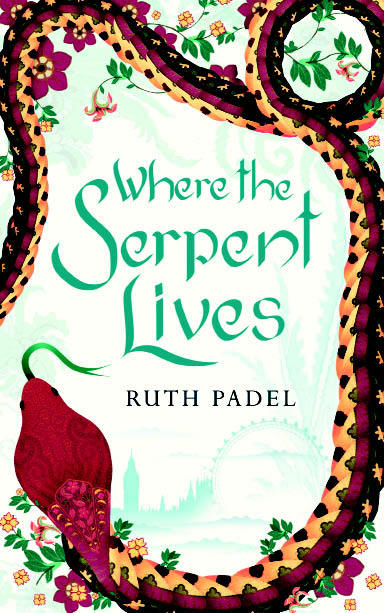Award-winning poet Ruth Padel established her prose credentials with her autobiographical travel book, Tigers in Red Weather. Journalist Aatish Taseer trawled his own past and background for his memoir, Stranger to History. Now they have produced first novels connected by both dislocation and location — India, though they deal with very different versions of the subcontinent, viewing it from opposite, culturally shaped perspectives.
Padel’s Where the Serpent Lives moves between a tangle of human relationships and an environment under threat. Writing about nature, she brings a poet’s intensity to her prose: objects, plants, and the wildlife that stalk her pages, are all fiercely observed. Her narrative spirals like a tropical plant, luxuriant with metaphor and imagery.
Set in 2005, the year of London’s suicide bombings, the novel links India, London and Devon, interweaving two troubled marriages, a father/daughter estrangement, a mother and son at odds. England forms a counterpoint to rainforest and jungle. Like the herpetologist character in her book, Padel is enthralled with snakes — king cobras, pythons, kraits, vipers. She examines her serpents with a scientist’s rigour but a spellbound eye, passionately curious about arcane, intriguing detail: the nervous system of a snake, the cobra’s lack of an external ear; the beauty of its colouring and pattern marks.
Reading the book, there were moments when I was at one with Padel’s zoologist: as a child I too saw locals offer propitiating saucers of milk to the serpent monarch, and learned to respect the speed of a cobra’s movement, the way it ‘shoots into wet grass with a liquid zigzag’ like a spreading crack.
The wildlife is not confined to India; in London we enter into the lives of foxes; Devon has the most savage episode in the book: a shockingly violent scene of badger-baiting. On English soil, shamingly, suffering is inflicted for ‘fun’. In the jungle, elephants and tigers are under threat from poachers, forests felled for financial gain; corruption and uncaring officialdom result in habitats lost, species disappearing.
Padel seems closer to her beasts than her people: her English characters are familiar archetypes: the disillusioned wife; the part-time husband, full-time philanderer; naïve mistress; a teenager in a state of monosyllabic withdrawal. Couples break up, patterns re-form, estrangements are overcome, predictably; a redemption of sorts achieved. The young biologist in the jungle is, to a degree, the catalyst, but it is India’s jungle that impinges and brings about change for all the characters. Here, Padel pulls the reader into the heart of it. Nature is her forte and in the wild she sings her best song.
Aatish Taseer takes the reader on a very different journey: a brief descent into hell. Set almost entirely in India, The Temple-Goers gives us a picture of a world in foment, near boiling point. Taseer paints a scathingly comic picture of underdogs on the make: their entrepreneurial energy, ferocious zest for life, the snakes and ladders of upward mobility. The affluent are casually brutal, the climbers precariously balanced — all too easy to lose their footing and fall.
The narrator, also called Aatish Taseer, would seem to bear a close resemblance to the author: of mixed Indian-Pakistani parentage, a deracinated young writer working on his first novel who returns from college in America and a couple of years in England as a freelance journalist to a Delhi bursting with paradoxes, the city awash with money while squalor persists, undiminished. There are gated colonies, new roads, ‘families sleeping and cooking under the new flyover’. The privileged young inhabit an environment of fitness gyms, personal trainers, mobile phones, chauffeur-driven limos, lipo-suction and designer labels, blind to the filth and decay outside their radar, where millions live as they have always lived, clinging to survival by their fingernails.
The narrator-Taseer is pulled between the freedoms of western lifestyle and the old, enduring traditions, between the laptop-addicts and the temple-goers of the title. In short, he’s lost. His guide to the bewildering inferno is Aakash, his personal trainer, a charismatic, ambiguous figure; a ‘gym Brahmin’, high-born but broke; needy, arrogant and inventive. Together they explore the tricky, often absurd territories of religion, class and sex in an India that is changing while it remains the same. Shiva redrawn with rippling six-pack abs. This guided tour of circles undreamed of by Dante is a bit like watching a Big Issue seller move in on the Groucho crowd. For a while.
Taseer’s imagined breakaway state with borders adjoining Delhi provides a disquieting, ironical picture of modern politics. Both narrator and guide have trouble with girls, and when an inconvenient murder takes place, it’s a case of rounding up the usual suspects. Occasionally the reader might get swamped by information overload, the minutiae of caste, politics and urban geography. But the sheer chutzpah of the characters takes you with them. Vicious fun. q
Lee Langley’s new novel Butterfly’s Shadow is published by Chatto & Windus in July.






Comments